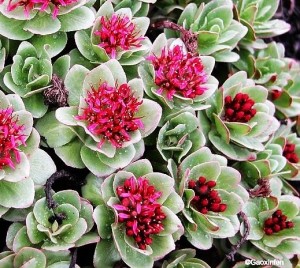Rhodiola Crenulata (Hong Jing Tian)
 http://www.elotus.org/content/tcm-pharmacology-herpesvirus-infections-mm-van-benschoten-omd
http://www.elotus.org/content/tcm-pharmacology-herpesvirus-infections-mm-van-benschoten-omd

1. Pain relief: Acupuncture is well known for its powerful ability to reduce and often eliminate pain. This is a huge attraction for athletes who often experience strain and injury. Using acupuncture to relieve pain, the athletes never have to worry about experiencing side effects from pharmaceutical drugs or failing a drug test. How does acupuncture alleviate pain?
There are several studies which have shown that when needles are inserted, they stimulate points that boost our natural painkillers. In one study, researchers at the University of Michigan (published by University of Michigan Health System in Journal of NeuroImage, Vol. 5, No. 83, 2009) found acupuncture affected the brain’s long-term ability to regulate pain.
2. Muscle relaxation: Athletes train for thousands of hours which can be very hard on their bodies. Acupuncture reduces soreness from workouts and increases blood flow throughout the body. This helps athletes get ready for another day by relaxing their tight muscles and reducing inflammation.
3. Fast healing: When an athlete has to skip training or miss a competition, precious time is lost. Acupuncture helps injuries heal faster so athletes do not miss valuable training time.
4. Energy enhancement and better sleep: Acupuncture boosts athletes’ energy when they are awake and helps them to sleep at night. The body repairs itself at night so sleeping well is essential to good performance.
5. Improved blood flow: Acupuncture increases the amount of nitric oxide in the body. A study from UCLA Medical Center (Responses of Nitric Oxide-cGMP Release in Acupuncture Point to Electroacupuncture in Human Skin In Vivo Using Dermal Microdialysis. In Microcirculation, 2009 May, 26:1-10) concludes that one reason acupuncture is effective is because the needles increase the release of nitric oxide throughout the body. Nitric Oxide causes the blood vessels to relax and to widen, thereby opening up the arteries. This allows better blood flow to the heart and your other important organs.
http://beawesomefitness.wordpress.com/2012/05/03/lose-10-pounds-in-10-days/
http://www.latimes.com/science/sciencenow/la-sci-sn-chinese-medicine-chronic-pain-20140102,0,5530097.story#axzz2qYDK81Qo
Excellent article about the active ingredient in Chinese herbs with pain relieving properties.
Excellent article from the LA Times re the amount of salmonella and other bacterial disease in our chicken
http://www.latimes.com/business/money/la-fi-mo-poultry-reports-20131219,0,2410030.story?page=2#ixzz2ppPD1JR0
The following link is from the Los Angeles Times. It is written by a physician with first-hand experience of acid reflux and how he approached resolving it for himself.
While, he doesn’t use herbs or acupuncture here, he tells the story of revamping his lifestyle, eating habits and exercise to lose weight and rid himself of the acid reflux (GERD). Had he considered utilizing Chinese medicine for this issue, he would have also gotten considerably much better. Specific combinations of herbs and acupuncture have proven successful for many people with this condition. Also, I offer specific advice for sleeping and stress reduction that also help.
http://www.latimes.com/opinion/commentary/la-oe-jones-heartburn-fitness-diet-20131020,0,2173035.story
It’s easy to be confused by which complementary treatment options to choose for the serious diagnosis of breast cancer. Here’s what I’ve learned through the last couple of years of my tutelage with master herbal clinician, Dr Matt Van Benschoten, O.M.D: Herbal medicines are never intended to be stand alone treatments of cancer.
Surprisingly, even in much of Asia—China, Japan and Korea— surgery, chemotherapy and radiation are always first line treatments. The most powerful branches of Chinese medicine—customized herbal formulas, acupuncture, Qi Gong and diet are used to make those western treatments even more effective and help limit their toxicity, but they are not intended to be a substitute for them.
Nonetheless, there exists extensive documentation in scientific literature on the synergistic (cooperative) effects of herbal medicines with specific chemotherapies. For instance, Adriamycin, while one of the most common first line drugs used in breast cancer also has significant toxicities—especially for the heart. Luckilly, there are a number of herbal medicines that have been documented to be cardio-protective against the damaging effects of Adriamycin. Furthermore, there are specific herbal medicines that have been documented to enhance the effectiveness of Adriamycin. And perhaps most overlooked, there are herbal medicines that help reverse resistance to that drug. One example shows up when cells become resistant to Adriamycin and you give a patient herbs, then you give the drug again and the Adriamycin works because the herbs make the cells less resistant to it.
So that’s the basis that herbal medicine has a role to play in cancer treatments. Not as a stand-alone therapy but as something to make the conventional treatment more effective, less toxic and to avoid developing resistance.